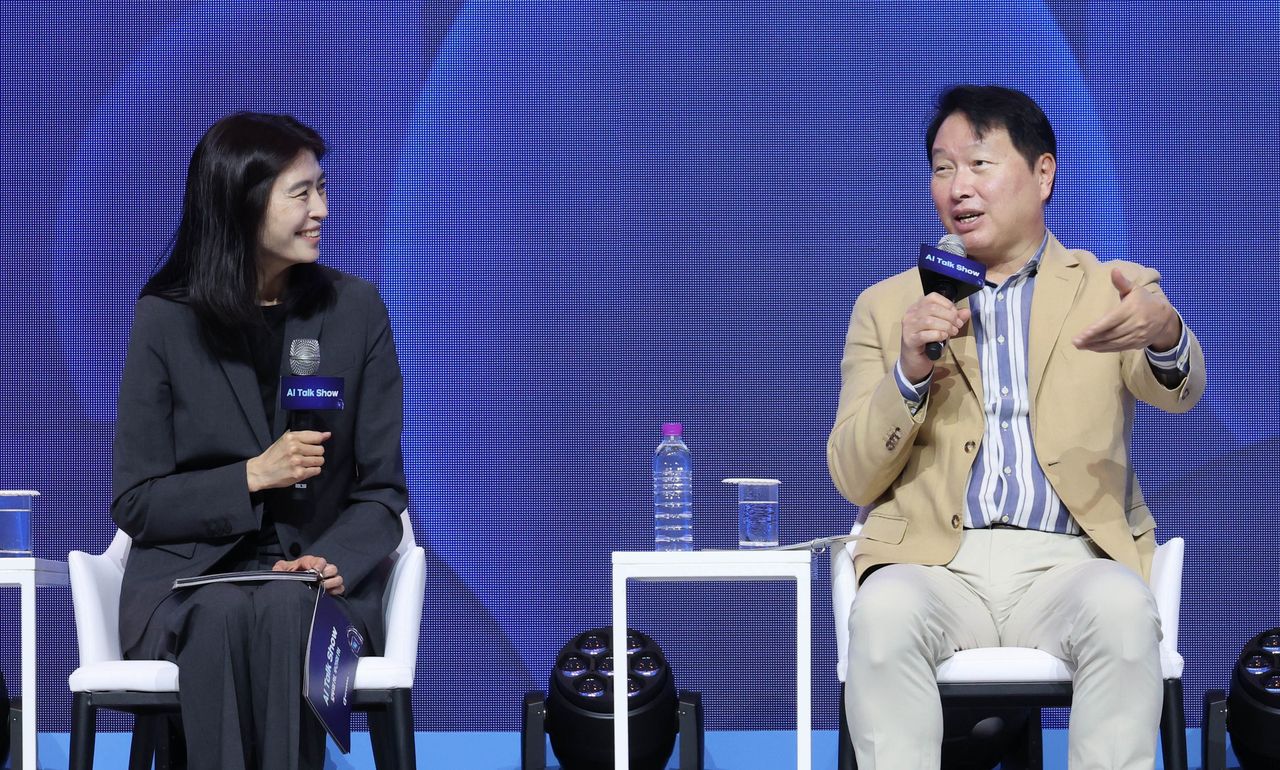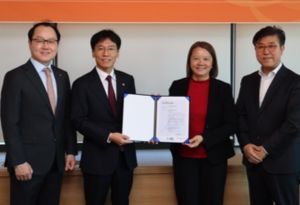 GYEONGJU, North Gyeongsang Province — South Korea must bolster data collaboration with Japan to counter China’s growing dominance in AI manufacturing, according to Chey Tae-won, chairman of SK Group and the Korea Chamber of Commerce and Industry.
GYEONGJU, North Gyeongsang Province — South Korea must bolster data collaboration with Japan to counter China’s growing dominance in AI manufacturing, according to Chey Tae-won, chairman of SK Group and the Korea Chamber of Commerce and Industry.
During an AI session at the KCCI’s annual summer forum in Gyeongju on Friday, Chey stated, “China is emerging as the biggest threat in AI within the manufacturing sector. For South Korea’s manufacturing to survive, it must outperform its competitors.”
Chey emphasized that while Korea possesses substantial manufacturing data, China’s resources far exceed theirs. “If their learning capabilities accelerate, Korea’s manufacturing industry will inevitably face more significant challenges,” he warned.
Highlighting the critical role of data — which he likened to nourishment for robust and healthy AI — Chey advocated for a partnership with Japan.
“Japan has an extensive repository of manufacturing data. If our two countries can exchange and jointly train this data, we can develop superior AI,” he explained.
The session, titled “AI for All, AI for Us,” brought together corporate executives, startup founders, and AI experts to explore practical applications of AI in business.
Kakao CEO Chung Shin-a, who moderated the session, echoed the increasing importance of data, describing it as the “core competitiveness and resource in the AI era.”
Chung noted that AI models have now surpassed the average person’s knowledge level and can reason, opening up new business opportunities. However, she cautioned that AI’s strength is heavily dependent on its data foundation.
“If the model doesn’t learn from sufficient data, its performance will decline, and the probability of finding the correct answer decreases,” Chung explained. “Even with adequate learning, if bias is present, accuracy becomes an issue.”
Chung also touched on the Industry Ministry’s recent plans to expand AI-powered factories across the country. “In exchange for free cloud services, U.S. tech giants are reportedly requesting Korean factories to provide manufacturing data,” she revealed.
She pointed out that the U.S., with its relatively weak manufacturing base, is seeking to secure data on variables such as defect rates, temperature, and humidity to study their correlations.
The session also showcased Korean startups implementing AI across various industries. Washwat, a laundry service startup, uses AI to process 30,000 care labels daily, ensuring quality service for consumers.
Another startup, Liner, offers a specialized AI search engine for academic research. Vuno employs AI to predict heart age, cardiac arrest risk, and other diagnoses by analyzing X-rays, MRIs, and other hospital data.
Looking ahead, Chey stressed the urgent need to cultivate skilled AI professionals through education and attract high-skilled workers from abroad to ensure Korea’s leadership in the AI race.
“We need over 100,000 AI engineers for Korea to remain competitive. In the future, we may require one million or even ten million AI experts,” Chey asserted.
To develop such talent, Chey proposed making AI a mandatory course in universities and tapping into global talent, acknowledging that education alone takes time and doesn’t always produce top-tier engineers.
“One reason South Korea isn’t advancing is brain drain. We nurture brilliant minds only to see them leave for global opportunities,” he noted, emphasizing the need for Korea to become more welcoming to overseas professionals.
Chey also called for lower electricity prices and the implementation of differentiated pricing.
Operating an AI data center requires enormous power, he explained, comparing it to a power plant and referencing SK Group’s data center in Seoul’s Gasan district.
“Approximately 85 percent of our operating costs come from electricity bills,” he stated. “I have repeatedly requested cheaper electricity.”
He advocated for a market-based electricity pricing system that charges more for areas farther from power generators and less for those nearby. Chey cited the liberalization of oil prices in the 1980s, which transitioned from standardized nationwide prices to market-based pricing, suggesting that electricity pricing should follow a similar model.









Most Commented